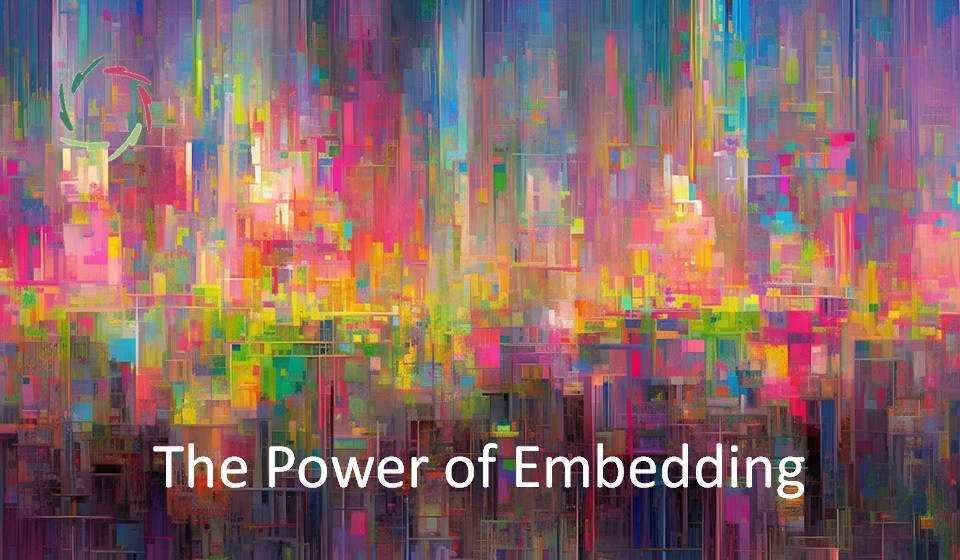The Power of Embedding

This is the power of complexity in humans and in present-day Large Language Models (the most visible form of A.I. nowadays).
‘Embedding’ is the transformation of information/knowledge into a format of many subconceptual elements interacting in multifaceted systems that makes this information prone to emerge in novel ways.
A multitude of relatively simple (smaller than concepts), connected elements
These elements can influence each other in relatively simple ways. The immense sum of all these tiny influences leverages what can happen at the level of the multitude, providing remarkable flexibility.
One can see this as a fluidity between simplicity and complexity. Namely, when correctly leveraging this flexibility, new properties can emerge spontaneously (‘as if’ this happens by itself) — including ones that haven’t been put explicitly into the system. Thus, what comes out can be pretty amazing.
Positive whirlpool
If, one way or another, these amazing things give momentum to more complexity, we’re right into a positive whirlpool, underscoring the potential for iterative, simple actions to accumulate and generate substantial, even unpredictable, outcomes.
One example is the idea of self-organizing systems in nature, where simple rules and interactions at the individual level can lead to complex and adaptive behaviors at the collective level.
A related example is the natural evolution toward intelligence – including the human type.
Another example is LLMs evolving to even more performant LLMs (‘artificial’ evolution).
Can one see in this an underlying inclination toward growth, both in humans and artificial intelligence?
A leap to quantum-like
I’m far from being an expert in this field. What I am sure of is that the following sentences carry metaphorical rather than literal parallels. (The brain is no quantum computer.)
That said, might it be that the whole universe is an embedding into/from quantum? What we see as quantum particularities are then like subconceptual elements that – through their interplay – give rise to more conceptually graspable things (atoms, molecules, the known universe…).
But then, something else lies on the other side of quantum as a source of information. If what comes out of it is the – more or less – familiar universe, then its information is also what is entered. Albert Einstein‘s “God doesn’t play dice” is correct, after all. What got embedded may be unfamiliar, yet it has characteristics that, through the translation, end up in what we know (although things may get lost in translation).
This sparks a reflection on a core aspect of the AURELIS approach to personal development.
The idea that the universe, with its vast complexities, might emerge from quantum interactions parallels how complex human behaviors and thoughts can arise from the fundamental, often non-conscious, processes within us.
This mirrors the AURELIS focus on accessing and influencing these subconceptual layers of the mind to effectuate profound personal growth and healing, emphasizing the depth and interconnectedness of all mind-related things.
It suggests a harmonious blend of simplicity and complexity, where profound, meaningful change can emerge from the accumulation and interaction of simple elements.
This principle is central to the AURELIS philosophy.
With this, the journey towards personal growth and healing is seen as a natural, evolving process grounded in the individual’s innate capacities for self-improvement and self-understanding.
Eventually, this dynamic interplay between individual elements and the emergent whole – be it in the realm of personal growth, artificial intelligence, or the universe itself – underscores the importance of embracing complexity, engaging with our deeper selves, and fostering a holistic approach to understanding and influencing the world around us.
The power of embedding is the driving force.
At the same time, it’s a reminder of the vast unknowns that still exist, inviting ongoing curiosity, exploration, and humility in our quest for understanding.
Compassion is the ethical stance that belongs to this.


